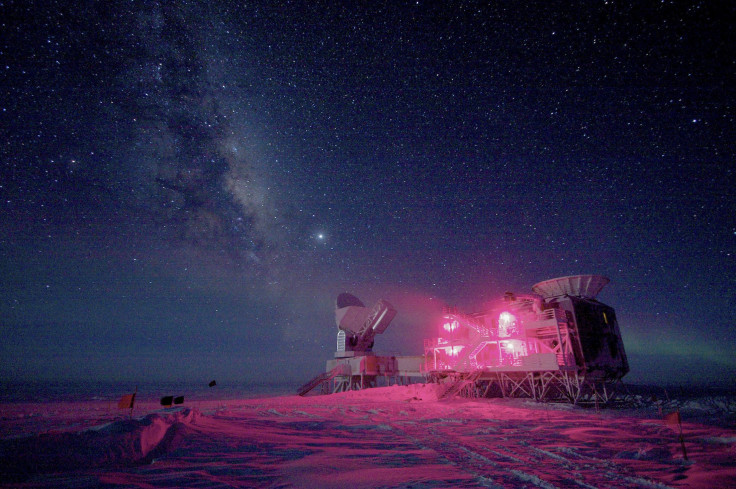Space Dust Findings Raise Doubts Over Cosmic Inflation 'Proof'

A new galactic dust map, compiled using data gathered from the European Space Agency’s Planck Mission, has cast further doubt over what was once hailed as one of the biggest scientific claims of the century, according to media reports.
In March, scientists from the Harvard-Smithsonian Center for Astrophysics in Cambridge, after gathering data through the BICEP2 telescope in Antarctica, announced that they had, for the very first time, detected gravitational waves. These waves, which are ripples in the gravitational field etched into the residual radiation from the Big Bang -- known as the Cosmic Microwave Background, or CMB -- were seen as a telltale sign, or ‘smoking gun,’ of cosmic inflation.
The potential discovery was seen as incontrovertible proof of an inflationary universe -- a leading theory about the origin of the cosmos that states that space-time went through a phase of rapid expansion, faster than the speed of light, a trillionth of a trillionth of a trillionth of a second after the Big Bang 13.7 billion years ago -- and as an answer to some of the most fundamental questions about the nature of our universe.
But the findings, which had been called into question right from the very beginning, have now received a serious blow from the release of the new map, published in the journal Astronomy and Astrophysics, which suggest that galactic dust could fully explain the observation.
The new map shows that polarization -- a characteristic swirl in the direction of the CMB -- caused by space dust is significantly higher in the region around the South Pole than was estimated by the BICEP2 team.
“It’s certainly possible that the results can be explained purely by dust,” Jo Dunkley, professor of astrophysics and a member of the Planck team at Oxford University, told The Guardian. “Our work doesn’t rule out the possibility that they have gravitational waves, but there is dust in there and it seems to be higher than thought.”
According to the paper, most of the polarization, which was taken as proof of the presence of gravitational waves, can be attributed to the higher-than-expected concentrations of cosmic dust in the region.
Andrew Pontzen, a cosmologist at the University College London, told The Guardian that the new findings added to the weight of evidence that went against the BICEP2 results.
“A fair-minded person would now say that the prevailing wind is against Bicep. Their result isn’t completely dead though. What you can say for sure is that the original analysis was insufficient to say the signal is really there. It doesn’t mean for sure that they haven’t seen anything,” he reportedly said.
© Copyright IBTimes 2024. All rights reserved.






















